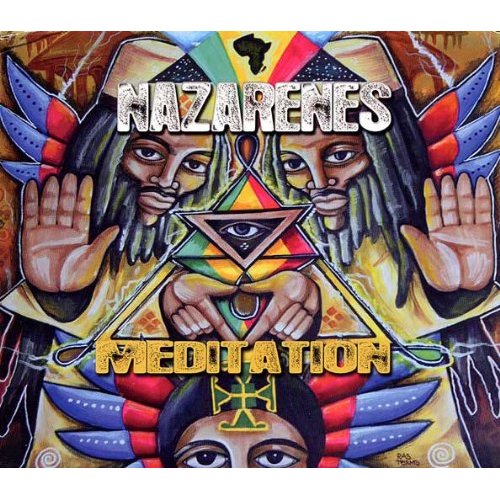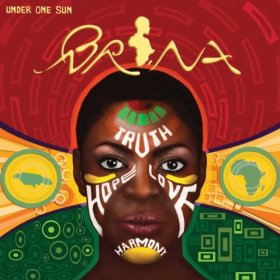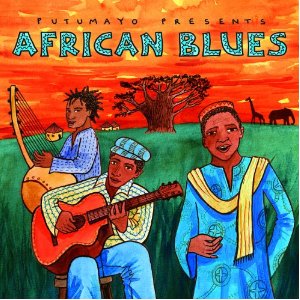The Boot Box October 2004
Reviews by Ted “The Boot” Boothroyd
 Fely
Fely
: De Zere Gnan, Fely Productions, 2003
Rating: A
The headline: A world music sensation & top model from Cote dIvoire
West Africa releases her American debut album. Thats from the promotional
news release. I was more than skeptical. Whats a top model doing recording
an album and becoming a world music sensation? She should be in Milan
glomping down the runway and pouting like a spoiled three-year-old. But
making music? Give me a struggling, real artist any day.
I couldnt stay outraged for long. I listened to the album once, twice,
thrice, and was forever hooked. De Zere Gnan is a marvel. The good-looking
lady can sing.
Fely is Felicite Tchaco, and she has recruited a talented bunch of
musicians from near (USA, where she now lives and records) and far (Africa,
Portugal). The result is a wide variety of musical influences, combined,
conjoined and cohabiting on very friendly terms. Fely sings about life,
love and religion in four or five different languages, with lovely melodies
and sparkling arrangements to keep everything accessible for the linguistically
challenged among us. With most of the ten songs clocking in at around
the five minute mark, even the quicker tempos sound unrushed and genial.
The title track starts us off in a relaxed Latin mood, with Felys double
tracked lead offering homage to our forefathers; she even does her own
backup singing. Thats followed by a feel-good song with lithe, happy
rhythm, guitar solo and light touch on piano. Track 3 (reversed with #4
in the liner notes) is gentle and somber, its beautiful tune and vocal
delivery enhanced by an absolutely gorgeous and sensitive violin. The
English lyrics are either stimulating or naïve, depending on whether you
think society can say no to evil. Kora and djambe bring a swinging,
lilting change of pace on Den Kele. Then comes Cest Lui, with a solid,
snappy rock rhythm and a French pop vocal style.
Mobali Naga has a soukous rhythm with precisely flowing guitar and
spirited vocal. The sax that shows up there also delivers a plaintive
solo in the next track, a love song for Jesus that shares the beautiful
tune of Ralph MacTells folk song Streets of London. Track 9 is slow,
deliberate, stark, almost Celtic, with a long melodic line. The album
closes with the bouncy, good-time Djugumen, Felys quicksilver vocals
and spoken parts reminding me of Miriam Makeba.
De Zere Gnan is the perfect vehicle for
you to persuade any disbelieving, unsophisticated, backward friends of
two important facts that the rest of us know already, or have recently
found out: 1) top models can be real people too, with actual talents,
and 2) a musical amalgamation of influences and languages (world music,
in other words) can be user-friendly, highly accessible and immediately
enjoyable.
 Lasana
Lasana
Bandele: Storitela, Storitela Music, 2004
Rating: B
The title Storitela is intended as a description of the artist,
but its hardly sufficient. Bandele is as much teacha and preacha as story
tella, in facthes a very fine singa and song writa as well. Indeed, considering
how quickly his passionate delivery draws us in and gets us ready to listen
and learn, I figure he has folkie genes. Maybe hes the Pete Seega of
reggae.
The approach is didactic, but its appealing too, and this balance is
established from the very first track: over percussion that is low-key
yet propulsive, Bandele proclaims, I am the story teller/Come gather
round children. The second song, Living in Shacks, delivers standard,
although very strong, reggae, and I can understand why it was a hit way
back when. Track 3, Col War, is a political diatribe. Then follows
a bit of an oddity that combines gentle vocal, acoustic guitar, flute,
electric guitar, nature sound effects, and intriguing lyrics. The next
track, Thrill Seeker, is electrified from the start, with heavy rock
influences in the guitar, percussion and even vocalit reminds me very
much of Garland Jeffreys, definitely not a bad thing.
Subway Blues is a narrative, told over chiming organ, about an intellectual
gypsy who tours the world over, expecting to find paradise when he gets
to Jamaica. Talkin Jazz has a memorable tune to sweeten its message
of pride and self-sufficiency. The following song moves along happily
thanks to a catchy melody line that could have come from Peter Tosh. Next
is Break Free, featuring the slowest, stickiest one-drop rhythm on the
disc. Big City is a major statement about the destructive seductiveness
of urban life–it has a gently strummed acoustic guitar, pretty tune,
dramatic delivery, lonesome sax and childrens chorale; what more could
you want? Its only with the final two songs that the album declines.
The pretentiousness of Before I belong to you, let me belong to me is
like, yikes! And the perfectly good tune of Waiting Inside is wasted
by synthesized arrangements and self-absorbed lyrics.
Storitela is an expanded, remastered
version of an album originally released at the end of the 1980s. Welcome
back, Id say, because while the last two tracks are extraneous, the first
ten are highly engaging and deserve to be heard. You may have been impressed
by Bandele when he sang Cassidy on the Grateful Dead reggae tribute
album a few years back. Well, heres more of the great story tella and
entertaina. I recommend you become a listena.
 Duboom:
Duboom:
Cambio, Alma Music/Rasta Snob Records, 2003
Rating: B
In reggae, as in other genres, there are momentous and enjoyable albums
(Cultures Two Sevens Clash), momentous and non-enjoyable albums
(hmm, cant think of one right now), and there are enjoyable but non-momentous
albums. Cambio is one of those.
The spirited Duboom is part of an obviously vigorous reggae scene in
Italy. It has a bit to do with dub, as hinted by the name; a bit to do
with ska (I guess Skaduboom would have been too much), and much to do
with a plain old unique and creative approach to the roots. If that last
part sounds self-contradictory, it fits.
The rootsy/generic elements, in alphabetical
order:
• A lyric that says
strictly reggae music make I feel so nice.
• Atmospheric swirls,
echoing throbs and other dub effects that come and go.
• Attractive melodies.
• Holier-than-thou self-promotion
(my actions speak louder than your empty words).
• Instrumental prowess.
• Instrumental tracks.
• Lively toasting with
lots of attitude (female, in this case)
• That heartbeat bass
and drum one-drop rhythm.
• Percolating percussion,
bubbly beats.
• Ska-type horns and relaxed vocals
atop a quick ska rhythm.
The unique/creative elements, in similar order:
• Appropriately strange
electric guitar solo within a ska tune.
• Experimental textures,
including indecipherable whistling sounds.
• Female lead vocal
that duets with itself.
• Relaxed impersonation
of Manu Chao doing a jazzy set in Las Vagas.
• Ultra-smooth segues from one track
to another.
Thats ten rootsy/generic items and five unique/creative
items. That doesnt account for everything, of course, but two-to-one
on the roots side sounds about right for this album. Its a good balance,
and while momentous Cambio is not, it is pleasurable, danceable
and good fun. That exchange is more than reasonable.
MOJAHP: I Rise, Rude
Bwoy Records, 2004
Rating: B
The artists name seems to be MOJAHP, but MOJAHP seems to be an acronym
for Music of Jah People. Is someone is confusing the musician for the
music? The artist for the art? Lets check the liner notes: ahh, the name
Earle McIntosh shows up as lead vocalist, song writer and executive producer.
Thats good enough for me: Earle, youre hereby the artist.
Theres intelligence behind this album. Classic cultural themes, yes,
but many of the lyrics (not quite all) are unique treatments of those
themes. The arrangements are steadfastly and appealingly reggae, yet the
reggae tradition they adhere to is a broadly musical one. I say intelligence
is responsible (presumably Earles), but it could be just imagination
and darn fine instincts.
The album starts with the screaming guitar of All Over The World. A
one-drop rhythm quickly takes control of the semi-generic reggae melody,
but its the blasts of electric guitar that emphasize the powerful lyrics
about survival, international politics and economic terrorism. Thats
followed by the dancehall rhythm and very full arrangement of Togetherness,
with vocal phrasing straight from Burning Spear and a nice piano interlude
in the middle. Jammin is as easy-skanking and friendly as youd expect,
and the lyrics offer an interesting psychological perspective I havent
seen elsewhere. Then the singer presents himself, gentle and guileless,
to his loved one: Here is my heart, girl. Another slightly hurtin love
song follows over bubbly rhythm. Then Sunshine comes barrelling straight
ahead with its sing-along tune and C&W steel guitar, making sure everyone
has a sprightly good time.
The catchy title track may be the highlight: another singsong vocal,
more bumping, jouncing rhythms; it delineates hardships but at the end
of each verse turns to the optimistic, Yes, I rise. With its mature
outlook (I accepted my struggles, then I saw them through), frugging
and wailing rock guitar solo, sympathetic female background vocals, and
very strange percussion, this is special.
But every track has its individual attractions. Theres more pleading
lovers’ rock with piano and breathy doo-wop harmonies. A slow and moody
late-night sax. A money-troubles theme sung to a quick, jaunty tune. The
dense, textured arrangement of the intriguing Writing Letters. An unrelenting
dancehall beat with folkie electric guitar on Step Pon Dem. It ends
with the celebratory Reggae Music as everyone jumps aboard a rubadub
rhythm.
MOJAHP, or Earle for short, has created a wonderfully
listenable album. IRYBIS. Thats short for I Recommend You Buy It Soon.
 Michael
Michael
Rose: Happiness: The Best of Michael Rose, Heartbeat, 2004
Rating: B
Reviews of greatest hits albums are as predictable as the albums. What
do you expect the reviewer to do, other than summarize the artists credentials,
reveal what stages of the artists career are represented (and in the
process reveal the reviewers own intimacy with obscure details), mention
a few song titles, suggest that the reviewer would have done a better
job of selecting tracks than the compiler did, complain about consumer-driven
marketing taking precedence over art, and conclude that overall its darn
good stuff but readers have to decide for themselves whether its really
necessary.
Okay, lets get to it
Reggae star Michael Rose started solo in the mid-70s, became lead singer
for the estimable Black Uhuru, then returned to a notable solo career
that has drifted from his strictly roots roots to become much more dancehall-oriented.
He is as good a song writer as he is a vocalist. Happiness: The Best
of Michael Rose inadequately represents his initial solo period with
a single song, Guess Whos Coming For Dinner. (Its listed as
to
Dinner, but the to only came when Black Uhuru recorded the song
later.)
The Black Uhuru era provides just three songs, Rent Man, Plastic Smile
from the Guess Whos Coming
album (not the track I would have
chosen; why not Abortion or General Penitentiary?), and the Bob Marley
song, Sun is Shining. Thats an odd choice too, because a) its not
Rose-written, and b) the vocal is rather imitative of Marley anyway. So
why is it here? Was it a marketing decision to help sell the Channel One
compilation its taken from?
That leaves the bulk of the album, 14 songs, devoted to Roses later
solo career. Some, like Its Alright, are indeed great, but a few, such
as the title track, Happiness, are reiterations of ideas explored more
successfully in the group context. A couple of guest appearances (Maxi
Priest and Shabba Ranks) provide welcome contrasts in vocal phasing and
texture.
And thats about it. Youll have to decide for
yourself whether you need this albumif youre a big fan, it means duplication,
but you may be attracted by the little extras: an alternate mix, a live
version, a short video. For Rose dabblers or novices this may be perfect,
because after all, there is no denying that many moments of great music
lie within. But its all so predictable.
 Mounia
Mounia
Sahara: Ive Got a Joy, Silver Globe Records, 2004
Rating: B
Using the title Mama Africa must bring out the best in songwriters
and performers. There seem to be dozens of songs by that name, and every
one Ive heard is worthy. A wonderful reggae example crops up on Mounia
Saharas Ive Got a Joy, and it also serves as a perfect illustration
of whats attractive about the album as a whole.
First we have the funky, brisk, highly musical lead vocal. Sahara makes
it seem so easy and natural. Then theres the strong, hook-laden song
writing, aided and abetted by a great sense of the dramaticthat elusive
quality responsible for keeping us interested throughout the whole song.
The supporting musicianship, arrangements and production play key roles
too, and when you combine all these features, well, its a true pleasure
to the ears. Much of the credit for Mama Africa, and for the album as
a whole, therefore belongs to producer and co-songwriter Delroy (Silvanus)
Roberts.
The very tuneful title track is one of the discs best, with prominent
horns and a lively bass that takes my mind back to Leslie Kongs productions
in reggaes early days. The song appears twice more at equal intervals,
once in French and once in Spanish, but the melody is so sturdy that you
wont tire of itin fact the repetition gives a coherence and defining
quality to the whole album. Yet there is great variety. Jah Is For Us
has a fragility in the arrangement that contradicts the confident lyrics,
but the contrast works beautifully. On the other hand, the lyrics of Destiny
(obstacles in the way
I aint gonna stop) reflect exactly the songs
propulsive dancehall rhythm, and are delivered by a tough, rootsy lead
vocal around unique percussive effects. An intermittent electric guitar
brings different textures to What Type of World, a tune with a particularly
strong groove. And a subdued trumpet fanfare introduces the album closer,
a beautiful hymn of praise to Jah called Thank You.
According to the liner notes, Sahara has performed
off and on since the age of ten, including an appearance with Everton
Blender a few years ago. Despite that partial exposure and her obvious
talent, this is her first album, and it seems that we have her collaborator
Roberts to thank for rediscovering her and pulling her into the studio.
Together, they have made a great album. (But not a totally great package:
numerous typos glare at us from the lyric sheet. Helloo, spell checker,
guys?)
 Various:
Various:
Skasmatic, eight76 Records, 2004
Rating: B
A incredulous reggae fanatic
Heard the one-riddim disk called
Skasmatic.
It could all sound the same,
And be boring and lame,
But its not! he insisted, emphatic.
Like the one-rhythm reggae album, the limerick seems a ridiculous concept:
too rigid, too restrictive a format, too confined a space to do anything
worthwhile. Whats left to create with if so much is pre-determined? The
answer is, of course, that creativity and strict limitations can go hand-in-hand.
Thus we have books filled with five-line limericks; we have Bachs fugues;
we have the decorated ceiling of the Sistine Chapel, and we have Skasmatic,
a 55-minute CD that explores the possibilities of a single rhythm track.
Although for reggae enthusiasts the concept isnt usual, Im particularly
delighted with this example. It stands out from its contemporaries in
that first, its not dancehall but ska, and second, this particular ska
rhythm is a remarkably appealing one, and it seems to have brought out
the best in everyone concerned.
Evette gets off to a dynamic start with Feel Like Dancing, which makes
us feel the samewow, you cant ignore this one. I like the way Sharon
Forrester rides the rhythm in Burning Fire, especially in the introductory
bars. President Browns enunciation and phrasing perfectly echo the choppiness
of the ska rhythm, and he has chosen reasonably good lyrics. The appealing,
saucy vocals of Meeky remind me of the female teen solo singers of the
early 60s, which I admit is a stretch, considering the strong socio/political
theme that lies within the we be jammin under the stars lyrics. Luciano
offers a spirited prayer, while Yahbreeze proclaims the value of love.
Natty Remos fast chatting style plays contrasting vocal lines off each
other, and theres lots of spirit in Fyah Blazes delivery (shes my
lover; mother of the African tribe). The sax solo in the instrumental
rendering is a real pleasure, and the album closes with Skasmatic Party
Mix, which reprises parts of the earlier versions.
Those were the highlights for me, but each of
the 14 tracks on the CD is enjoyable and distinctive. Its enough to make
you want to start being creative yourself. Ready? There was a young deejay
named Meeky/Whose chatter was smart and uniquey
 The
The
Black Eagles: Warning, VP Records, 2004
Rating: B-
Buy this one for the well constructed songs, for the deep reggae one-drop,
for the American urban slant on Rasta consciousness, for the skilful playing
of the instruments. Dont buy it for the lead vocals. Not that the singing
is bad exactly; in fact it is sensitive, urgent and passionate when is
has to be. It sure isnt tuneful, though, or at times even particularly
accurate. Often that doesnt matter much; occasionally it does.
Thats my only warning about Warning.
Oddly enough, it seems to be the fame of the lead vocalist that is behind
the re-mastered re-emergence of this 1977 album. The name: Delroy Morgan.
The fame: father to Morgan Heritage. So this, in a sense, is where that
phenomenon started taking shape, with a New York group who got involved
in a band competition, wrote some songs, performed them and produced a
record.
This is that record, and its sturdy Jamaican roots are evident from the
first track. Forward Home (note the rootsy title) has gospel-influenced
call-and-response vocals over a very full instrumental sound, including
lively bass and vamping piano. Track two is Ethiopia (note the rootsy
title), with prominent horns, prominent harmony vocals, and a powerful
declamatory speech at the end over spare backing and repeated background
chant. Then comes a pleading Jacob Miller-style vocal on What Does It
Profit a Man (note the Biblical title). And thats how the album proceeds:
bold trumpet solo here, yearning lovers rock there, scratchy rhythm guitar,
inventive percussionthis album has its reggae down pat. The song I like
best offers a sing-song nursery rhyme approach to a historic event, the
black-out inna New York, turning it into a unique and complex piece
about race relations that remains timely.
Sounds good enough, right? If you love roots
reggae, you should probably ignore my warning about Warning and
get this anyway. Bob Marleys voice wasnt beautiful either.
 Jah
Jah
Works: Live Vol. 2, Riddim House Productions, 2003
Rating: B-
As I write this review, Im listening to the Misty In Roots album Live
at the Counter Eurovision 79. You know why? Because no one is asking
me whether Im ready to party, and I am not being told to make some noise
and to stick my hands up in the air, and it is a great pleasure not to
have someone make those demands on me as Im sitting alone in my living
room. Im reverting to this old LP to remind myself that its possible
to groove to that special vibe that comes of music that hasnt been sterilized
in the studio, without being subjected to the extraneous stuff that happens
at concerts and should stay there.
Never fear, though. I have listened thoroughly to Jah Works on Live
Vol. 2 and survived the exhortations to put dem up, put dem up.
I am pleased to report that the music itself is dazzling and powerful,
recorded at two Baltimore concerts in late 2002. They were obviously high
energy showsthe band works up a real sweat, and the two lead vocalists
often sound like half a dozen people singing and toasting at same time.
Theres no lack of reggae clichés here, lyrical and otherwise, but the
rousing delivery blasts right through them.
So it may or may not matter that Jah Works wasnt even trying to communicate
with me, the sober reggae fanatic listening at home two years later. They
were trying to deliver a good show then and there, for the benefit of
their rock and dancehall loving audience, which is what they did. Yet
I do appreciate the subtleties that survive the onslaught of electric
guitar, blatting horns and rushed tempos: the unusual song structure and
Middle East flavor in the instrumentation and percussion of Watcha Gonna
Do?, for example. As well as the Steely Dan-influenced vocals of No
More Loving, the pretty guitar figures and piano of You Should Know,
and more. Yes, there are rewards in a careful listening.
Jah Works has a great name (how can I deny that?), strong musicianship,
and now this new live album with full sound, palpable audience interaction
and a party atmosphere that manages to flow from carefree to weighty and
back again. If thats what you want, here, you got it. But play Misty
for me.
——————
Although the closest Ted Boothroyd has come to a personal
association with the Caribbean was to have a Trinidadian grandfather, which
Ted
didn’t really have a lot to do with, he happily took in Harry Belafonte’s
calypso
hits in the ’50s and became a huge reggae fan in 1969 when Desmond
Dekker’s “Israelites” hit big in Canada. Ted has reviewed books
on Caribbean music for The Beat, writes album reviews for other periodicals,
and co-hosts
a reggae and world music radio show in Fredericton, New Brunswick,
on Canada’s east coast.






